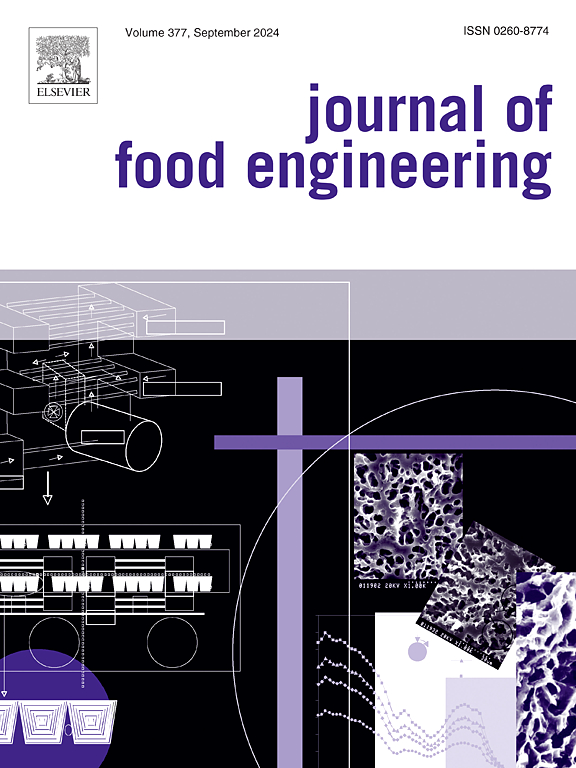Development and evaluation of a spray chilling system for antimicrobial treatment to inactivate E. coli on cantaloupe during refrigerated storage
IF 5.8
2区 农林科学
Q1 ENGINEERING, CHEMICAL
引用次数: 0
Abstract
Spray chilling technology combined with antimicrobials may be used to inactivate pathogenic bacteria present in fruits and vegetables. In this study, a spray chilling system was developed, and its nozzle spray characteristics (droplet size and velocity) were evaluated using Phase Doppler-Particle Anemometry. The system's effectiveness in reducing E. coli ATCC 25922 on cantaloupe rind surfaces using 80 ppm spray-chilled peroxyacetic acid, followed by native microbial and fruits' quality evaluation during 7 days of refrigerated storage was also investigated. The nozzle produced a spray with an average droplet Sauter Mean Diameter value of 10.97 ± 0.47 μm when moving downstream along the centerline. Meanwhile, the average droplet velocity on the centerline at 170 mm downstream was 9.73 ± 0.05 m/s. The application of spray-chilled peroxyacetic acid reduced E. coli ATCC 25922 by 1.67 log CFU/cm2 on cantaloupe rind surfaces over 7 days of refrigerated storage. The study demonstrated that combining spray chilling technology with antimicrobials could be used to inactivate pathogenic bacteria present in fresh produce without disrupting the food cold chain, as the treatment could be applied at the product's specific chilled storage temperature.
哈密瓜冷藏过程中用于灭活大肠杆菌的喷雾冷却系统的研制与评价
喷雾冷却技术结合抗菌剂可用于灭活水果和蔬菜中的致病菌。研制了一种喷雾冷却系统,利用相位多普勒-粒子风速法对喷雾冷却系统的喷嘴喷射特性(液滴大小和速度)进行了分析。并考察了该体系对80ppm喷雾冷冻过氧乙酸对哈密瓜皮表面ATCC 25922大肠杆菌的去除效果,以及在7 d冷藏过程中对哈密瓜果实的品质评价。喷嘴沿中心线向下游运动时,产生的平均液滴直径为10.97±0.47 μm。同时,在下游170 mm中心线处的平均液滴速度为9.73±0.05 m/s。在7天的冷藏过程中,使用喷雾冷冻过氧乙酸可使哈密瓜皮表面的大肠杆菌ATCC 25922减少1.67 log CFU/cm2。该研究表明,将喷雾冷却技术与抗菌剂相结合,可以在不破坏食品冷链的情况下灭活新鲜农产品中的致病菌,因为该处理可以在产品特定的冷藏温度下应用。
本文章由计算机程序翻译,如有差异,请以英文原文为准。
求助全文
约1分钟内获得全文
求助全文
来源期刊

Journal of Food Engineering
工程技术-工程:化工
CiteScore
11.80
自引率
5.50%
发文量
275
审稿时长
24 days
期刊介绍:
The journal publishes original research and review papers on any subject at the interface between food and engineering, particularly those of relevance to industry, including:
Engineering properties of foods, food physics and physical chemistry; processing, measurement, control, packaging, storage and distribution; engineering aspects of the design and production of novel foods and of food service and catering; design and operation of food processes, plant and equipment; economics of food engineering, including the economics of alternative processes.
Accounts of food engineering achievements are of particular value.
 求助内容:
求助内容: 应助结果提醒方式:
应助结果提醒方式:


